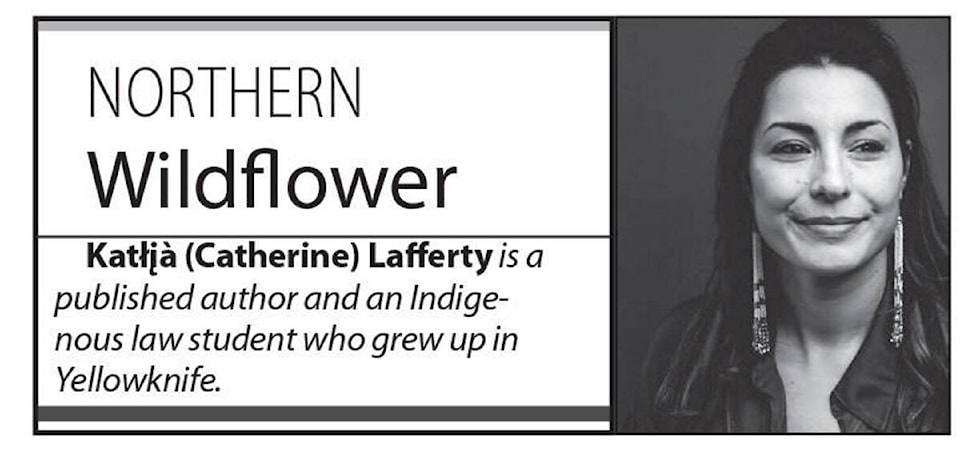In last week’s column, I wrote about the creation of off-grid communities, an initiative involving the National Indigenous Feminist Housing Working Group, an organization that I co-chair.
One benefit of off-grid homes is that they are collapsible and expandable, which allows for ease of transport and leaves a small environmental footprint. Off-grid homes are not permanent structures, in that they do not require a fixed address, which is in alignment with the principles of living and caring for the land far and wide, like our ancestors did, with access to different wintering and summering locations.
The off-grid units will be 100 per cent carbon neutral with the combination of the latest intermittent technologies applied. This will not require that residents produce an income — lifting expectations and barriers to housing that often lead to the build-up of arrears.
Each unit is designed to be able to withstand the extremely cold Northern winters without becoming dilapidated over time like the current state of Northern housing infrastructure, where poor materials and climate change are the ingredients for inadequate housing conditions, purportedly leading to a slow genocide.
We are in an emergency. Children who are breathing in mould are most at risk with high eczema and asthma rates with mould exposure likely a contributing factor.
The latest report confirms that the NWT is the third-worst in the country in regards to homes being in disrepair, yet there is still a severe lack of local level data on vital health indicators for people living in inadequate housing conditions in Northern communities where mould is most prevalent.
The long-term health impacts of mould can be deadly. According to the 2016 Statistics Canada census, more than one in three First Nations adults living in remote or Northern communities live in need of major housing repairs. These rates were highest for Inuit in Inuit Nunangat (31.5 per cent) and First Nations people living on reserve (44.2 per cent). To compare, only six per cent of the non-Indigenous population were recorded as living in a home in need of major repairs. Similar to environmental injustice, decrepit housing units are often found in Indigenous communities without the proper care and maintenance available to residents due to capacity and funding issues.
Healing and caring
Indigenous-led housing programs such as ours are particularly needed in the North as Indigenous peoples make up more than half of the population in the NWT. We have been historically and continuously dispossessed through a monopolized government-run colonial housing system that for far too long has not listened to what we have to say when it comes to implementing housing solutions and has encroached on our lands for their own prosperity.
Independent of the need for management and oversight by the NWT Housing Corporation and the Canada Mortgage and Housing Corporation, these off-grid homes are a transition into home ownership from a culturally relevant perspective, one that is not based on capitalistic ideology but rather one that is rooted and grounded in place-based teachings and centered around healing and caring for each other and the environment.
So far, our group has gathered and rendered three design options, one that has been carefully designed by a long-time Northerner paired with geothermal greenhouse technology for cultivating sustainable agriculture; one submitted by students at Wilfred Laurier University and Kuponya Innovations; and one still in the conceptual stages to be completed by the architectural team in the coming months. These units can range from $100,000 to $500,000 per unit.
Through our work, we aim to prevent and reduce the number of Indigenous peoples who are unsheltered — prefer to use the word unsheltered, as homelessness indicates that the person has no home when really the ground they walk on is their home and their roots — and help to stabilize the lives of Indigenous individuals who are unsheltered or at risk of being unsheltered. This program will assist them in moving towards self-sufficiency, support the delivery of culturally-appropriate homelessness services and support to Indigenous peoples, and strengthen the ability of our organization to support Indigenous peoples with lived experience of being unsheltered through capacity building, partnerships and/or the development of networks to increase positive impacts and improve results.
This important work not only falls under housing, it simultaneously provides solutions to the climate crisis, health care, socio-economic infrastructure, and fulfils calls to action outlined in the Missing and Murdered Indigenous Women and Girls Report, the Truth and Reconciliation Commission, and the United Nations Declaration on the Rights of Indigenous Peoples.
If you are interested in joining our working group please reach out to me at catherinelafferty@outlook.com
Mahsi cho.
